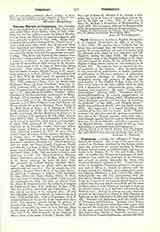

Termessus, a titular see, suffragan of Perge in Pamphylia Secunda. This is one of the most ancient cities of the Pisidians, inhabited by the Solymi, whose name was preserved for several centuries in Mount Solyma, known today as Guldere-Dagh, and was referred to by Homer, II, VI, 184, and Strabo, XIII, 630. A warlike city, Termessus maintained its independence even under the dominion of the Persians, and refused to receive Alexander the Great, who dared not besiege it (Arianus, I, 27). Under the successor of Alexander, Termessus preserved its autonomy and, in 189 B.C., formed an alliance with the Roman consul, Cn. Manlius, who confirmed it; under the Emperor Domitian it still enjoyed this alliance. Subsequently the city was incorporated with the Province of Pisidia and later with that of Pamphylia. From the ruins of the monuments which remain, it is evident that this was one of the richest and the most civilized cities of Asia Minor; as far back at least as the fourth century B.C., it had been colonized by the Hellenic race. Among its bishops we note: Euresius present at the Council of Nicaea in 325; Timothy ate Epheseus in 431; Sabinianus in 448; and Auxentius in 458. Timothy and Sabinianus bear the double title of Termessus and Eudoeias. Ramsay (Asia Minor, 18) has taken for granted that these two names refer to one and the same city, but in the year 458 we find at the same period Auxentius, Bishop of Termessus, and Innocentius, Bishop of Eudocias; moreover, in the Ecthesis of Pseudo-Epiphanius, towards 640 (Gelzer, “Ungedruckte . Texte der Notitiae episcopatuum”, 541), in the Notitiae of Leon le Sage and of Constantin Porphyrogenetus (“Georgii Cyprii Descriptio Orbis Romani”, ed. Gelzer, 74), these two archdioceses are absolutely distinct in the tenth century. It is not known when the Diocese of Termessus or the city disappeared. The ruins of the city situated at Karabounar, Keui in the sanjak of Adalia and the vilayet of Koniah, figure among the richest monuments of antiquity in Asia Minor.
S. VAILHE

